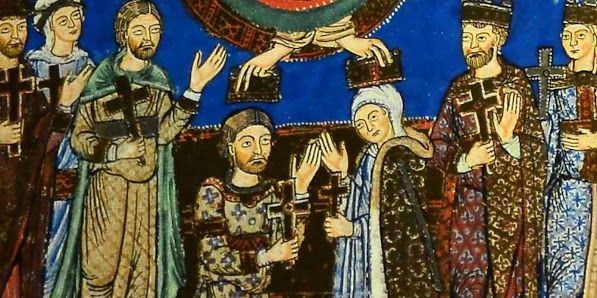In the autumn of 1139, the Dowager Queen Adeliza extended an invitation to Matilda to land in Arundel, West Sussex, an offer that Matilda gladly accepted. Arriving in West Sussex in August 1139, Matilda took up residence in Arundel Castle, accompanied by approximately 150 knights while Robert marched north-west to Wallingford.
King Stephen responded to the news of Matilda's arrival immediately by swiftly travelling south to Arundel and laying siege to the castle. Although this siege was not very well documented, it is generally understood that it lasted for a considerable period of time with Matilda trapped inside the castle throughout. Days passed, and with those inside the castle growing weaker and running dangerously low on resources, King Stephen appears to have had a real opportunity to eliminate his rival. However, in a bizarre move, and for reasons that are still unclear to historians, the King agreed to a truce which allowed for Matilda to leave the castle and be safely escorted to the west to reunite with Robert of Gloucester.
After reuniting with Robert in the West Country, Matilda made significant territorial gains. Her control now stretched from Cornwall in the west, through Bristol, and into Oxford and Wallingford in the East. The king knew that if Matilda and Robert's territory was to spread any further to the East, London would be seriously threatened. Realising that he had to act now to prevent this, Stephen marched towards Matilda's stronghold at Wallingford castle where he would begin his attempt to take back the region.
Wallingford castle was one of the most formidable in the country. With a deep moat and thick walls, and a military defence spearheaded by the talented military leader Brian FitzCount, Stephen quickly realised that the castle wasn't going to fall easily.
 |
| The ruins of Wallingford Castle today - it was once one of the strongest and best equipped castles in the country at the time, and played a key role during the Anarchy |
After a few days of no progress at Wallingford, Stephen left a number of men behind to continue the efforts as he continued west towards Wiltshire, but not before seeing that a counter-castle was erected on a site nearby. On his way westward, he was able to capture both the small castles of Ashton Keynes and Malmesbury. Unfortunately though, whatever progress Stephen was making in the west would be cut short, as word soon reached him that Miles of Gloucester had advanced on Wallingford in order to eliminate the men that the king had left behind. Dozens of Stephen's men would be killed, and many more captured as Miles destroyed the king's counter castle. This attack marked a disturbing shift for Stephen, as Empress Matilda's two main military leaders now commanded armies mere miles away from London. In a bid to protect his capital, King Stephen abandoned his campaign in the west and ordered his men to march back to London - preventing Matilda's men from attacking for the time being.
Build-up to the Battle of Lincoln
A moment of optimism was to follow for Stephen after he was able to stamp out a rebellion in the east led by Bishop Nigel, whose castles were confiscated by the king the previous year. However, in the north, further troubles were brewing.
The Treaty of Durham in 1139 had seen many barons in the north lose their land to King David of Scotland and his son Henry. One of these disinherited barons was the son in law of Robert of Gloucester, Ranulf de Gernon. Ranulf's lands were redistributed to Henry of Scotland, leaving Ranulf feeling cheated. He had been furious ever since.
An opportunity to enact his revenge on Henry of Scotland would follow after Christmas in 1139, when Henry was due to make his way back up north from London. Ranulf began plotting an ambush of the prince, but word of this soon travelled back to King Stephen, who then took it upon himself to personally escort Henry back up north to ensure his safety. This proved to be the final straw for Ranulf. Enraged at this, he orchestrated a new plan. A surprise attack of Lincoln castle and capturing it for himself.
One evening, Ranulf's wife, Maud of Gloucester, entered Lincoln castle under the guise of a social visit. Several hours later, Ranulf arrived to retrieve her, accompanied by a considerable contingent of his own soldiers. They forcefully entered the castle and fighting ensued.
After a relatively short siege, the castle was successfully taken by Ranulf. Hearing this news, King Stephen hastily made his way up north to confront the captor - setting the stage for the Battle of Lincoln.

Comments
Post a Comment